
Hiroshima Peace Memorial Park: A Sanctuary of Reflection and Hope
Discover Hiroshima Peace Memorial Park, a poignant sanctuary commemorating the atomic bombing of Hiroshima, embodying peace, resilience, and the enduring hope for a nuclear-free world.
Hiroshima Peace Memorial Park, located in the heart of Hiroshima, Japan, stands as a poignant reminder of the tragic events of August 6, 1945. This serene park is dedicated to the victims of the atomic bomb and serves as a powerful symbol of peace and resilience. The park spans over 120,000 square meters and is dotted with memorials, museums, and monuments that tell the stories of those affected by the bombing and convey a universal message of peace. One of the most notable structures within the park is the Atomic Bomb Dome, a UNESCO World Heritage Site. This skeletal building, once the Hiroshima Prefectural Industrial Promotion Hall, was one of the few structures left standing near the bomb’s hypocenter. It now stands as a stark, yet beautiful reminder of the past. Nearby, the Hiroshima Peace Memorial Museum offers an in-depth look at the events leading up to the bombing, the immediate aftermath, and the long-term effects on the survivors. The museum’s exhibits are both harrowing and enlightening, providing visitors with a profound understanding of the impact of nuclear warfare. The park also features the Cenotaph for the A-bomb Victims, an arched tomb that holds the names of all known victims. Each year on August 6, a solemn ceremony is held here to commemorate the anniversary of the bombing, drawing visitors from around the world. The Flame of Peace, another significant monument, will continue to burn until all nuclear weapons on Earth are abolished. Additionally, the Children's Peace Monument, inspired by the story of Sadako Sasaki, a young girl who died from radiation sickness, serves as a touching tribute to the child victims and embodies the hope for a peaceful future. Hiroshima Peace Memorial Park is not only a place of remembrance but also a space for contemplation and education. Its tranquil gardens, scenic river views, and reflective atmosphere make it an essential destination for those seeking to understand the profound effects of war and the enduring human spirit.
Local tips in Hiroshima Peace Memorial Park
- Visit early in the morning or late afternoon to avoid crowds and experience a more tranquil atmosphere.
- Allocate at least half a day to explore the park and its various memorials and museums thoroughly.
- Consider renting an audio guide at the Hiroshima Peace Memorial Museum for a more immersive experience.
- Take a moment to ring the Peace Bell, located near the Atomic Bomb Dome, as a gesture of respect and hope.
- Wear comfortable shoes, as there is a lot of walking involved within the expansive park.
Hiroshima Peace Memorial Park: A Sanctuary of Reflection and Hope
Hiroshima Peace Memorial Park, located in the heart of Hiroshima, Japan, stands as a poignant reminder of the tragic events of August 6, 1945. This serene park is dedicated to the victims of the atomic bomb and serves as a powerful symbol of peace and resilience. The park spans over 120,000 square meters and is dotted with memorials, museums, and monuments that tell the stories of those affected by the bombing and convey a universal message of peace. One of the most notable structures within the park is the Atomic Bomb Dome, a UNESCO World Heritage Site. This skeletal building, once the Hiroshima Prefectural Industrial Promotion Hall, was one of the few structures left standing near the bomb’s hypocenter. It now stands as a stark, yet beautiful reminder of the past. Nearby, the Hiroshima Peace Memorial Museum offers an in-depth look at the events leading up to the bombing, the immediate aftermath, and the long-term effects on the survivors. The museum’s exhibits are both harrowing and enlightening, providing visitors with a profound understanding of the impact of nuclear warfare. The park also features the Cenotaph for the A-bomb Victims, an arched tomb that holds the names of all known victims. Each year on August 6, a solemn ceremony is held here to commemorate the anniversary of the bombing, drawing visitors from around the world. The Flame of Peace, another significant monument, will continue to burn until all nuclear weapons on Earth are abolished. Additionally, the Children's Peace Monument, inspired by the story of Sadako Sasaki, a young girl who died from radiation sickness, serves as a touching tribute to the child victims and embodies the hope for a peaceful future. Hiroshima Peace Memorial Park is not only a place of remembrance but also a space for contemplation and education. Its tranquil gardens, scenic river views, and reflective atmosphere make it an essential destination for those seeking to understand the profound effects of war and the enduring human spirit.
Iconic landmarks you can’t miss
Atomic Bomb Dome
Visit the Atomic Bomb Dome, a UNESCO World Heritage Site in Hiroshima, symbolizing peace, resilience, and the enduring human spirit.

Peace Memorial Park - Hiroshima
Explore Hiroshima's Peace Memorial Park, a serene tribute to resilience and hope, honoring the victims of the atomic bombing and promoting global peace.

Hiroshima Peace Memorial Museum
Explore the profound history of peace and resilience at the Hiroshima Peace Memorial Museum, a key destination for understanding the impact of war.

Hiroshima National Peace Memorial Hall
Explore the Hiroshima National Peace Memorial Hall to witness a profound tribute to peace and the memory of those lost in the atomic bombing.

Children's Peace Monument
Explore the Children's Peace Monument in Hiroshima, a heartfelt tribute to the resilience of children and a symbol of hope for global peace.

Hiroshima Victims Memorial Cenotaph
Explore the Hiroshima Victims Memorial Cenotaph, a poignant monument of peace and remembrance in Japan's historic Peace Memorial Park.

Gates of Peace
Explore the Gates of Peace in Hiroshima, a symbol of resilience and hope, where history meets tranquility in a breathtaking setting.

Prayer For Peace Memorial Statue
Explore the Prayer For Peace Memorial Statue in Hiroshima, a profound symbol of hope and resilience amidst the scars of war, inviting reflection and remembrance.

Monument of Prayer
Experience the poignant beauty of the Monument of Prayer in Hiroshima, a serene memorial dedicated to peace and resilience.

Pond of Peace
Explore the serene Pond of Peace in Hiroshima, a cultural landmark symbolizing resilience and tranquility amidst the city's vibrant history.

Unmissable attractions to see
Children's Peace Monument
Visit the Children's Peace Monument in Hiroshima, a heartfelt tribute symbolizing hope, resilience, and the pursuit of peace for future generations.

Hiroshima Victims Memorial Cenotaph
Visit the Hiroshima Victims Memorial Cenotaph to reflect on a pivotal moment in history and honor the spirit of peace and resilience.

HIROSHIMA GATE PARK
Explore Hiroshima Gate Park: A family-friendly playground and serene escape in the heart of Hiroshima, perfect for relaxation and cultural experiences.

Flame of Peace
Experience the Flame of Peace in Hiroshima: a poignant reminder of resilience, hope, and the commitment to global peace.
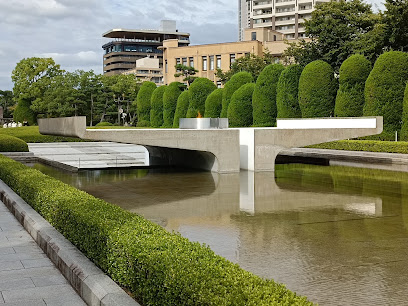
Atomic Bomb Memorial Burial Mound
Discover the profound legacy of peace at the Atomic Bomb Memorial Burial Mound in Hiroshima, a poignant tribute to resilience and remembrance.
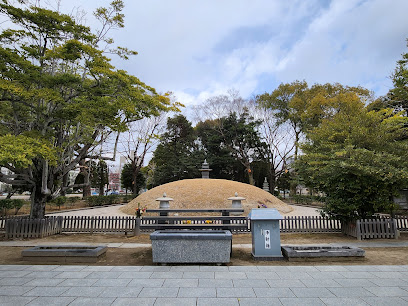
Prayer Fountain
Discover the tranquil beauty of the Prayer Fountain in Hiroshima's Peace Memorial Park, a serene haven for reflection and remembrance.

Prayer For Peace Memorial Statue
Explore the Prayer For Peace Memorial Statue in Hiroshima, a powerful tribute to resilience and a symbol of hope for a peaceful future.

Monument of Prayer
Discover the Monument of Prayer in Hiroshima, a poignant memorial honoring peace and resilience amidst the city's rich history.

A-Bomb victim-The monument of Hiroshima
Explore the A-Bomb Victim Monument in Hiroshima, a powerful symbol of resilience, remembrance, and the human spirit's strength amidst adversity.

Mahatma Gandhi Statue
Explore the Mahatma Gandhi Statue in Hiroshima, a serene tribute to peace and non-violence, capturing the essence of Gandhi's enduring legacy.

Essential places to dine
Nagataya
Discover the authentic taste of Hiroshima at Nagataya, where every bite of Okonomiyaki tells a story.

Caffè Ponte
Discover the essence of Italy at Caffè Ponte in Hiroshima – where authentic flavors meet warm hospitality.

Tsuki Akari
Experience authentic Japanese cuisine at Tsuki Akari in Hiroshima – where tradition meets flavor in every bite.

Parco della Pace
Discover the heart of Hiroshima through authentic Italian pizza at Parco della Pace – where tradition meets flavor in every slice.

Kome Kome Shokudo
Discover authentic Japanese cuisine at Kome Kome Shokudo in Hiroshima - affordable teishoku meals served with warmth and tradition.

Ristorante Mario
Experience authentic Italian cuisine at Ristorante Mario in Hiroshima - where every dish tells a story of tradition and flavor.

Hiroshima Shutendoji
Experience authentic Japanese cuisine at Hiroshima Shutendoji – where every meal tells a story through flavor.
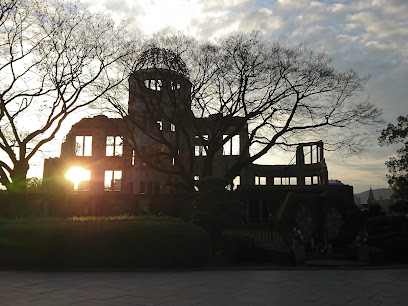
Graffity
Discover the vibrant flavors of Mexico at Graffity in Hiroshima – where delicious burritos meet warm hospitality.

Ekohiiki
Experience authentic Japanese izakaya culture at Ekohiiki in Hiroshima, featuring fresh seafood dishes and a warm atmosphere perfect for social dining.

Otis!
Savor authentic Tex-Mex cuisine at Otis! in Hiroshima – where vibrant flavors meet live music in an unforgettable dining experience.

Markets, malls and hidden boutiques
SOGO Hiroshima Store
Discover the best of Hiroshima shopping at SOGO, where fashion meets gourmet delights in a vibrant department store atmosphere.

Hands Hiroshima
Explore Hands Hiroshima for unique gifts, home goods, and DIY supplies in a vibrant atmosphere at the heart of the city.

FUJI GRAND Hiroshima
Experience the energy of FUJI GRAND Hiroshima, a dynamic shopping mall featuring a grocery store, local eateries, and a variety of shops in the heart of the city.

Sunmall
Discover the ultimate shopping experience at Sunmall in Hiroshima, where local culture meets modern retail and delightful dining options.

Animate Hiroshima
Discover the ultimate destination for anime and manga enthusiasts at Animate Hiroshima, where a world of comics, CDs, and collectibles awaits.

Yume Plaza
Explore Yume Plaza, Hiroshima's premier souvenir store, offering unique gifts that embody the essence of Japanese culture.

Hiroshima Peace Park Rest House
Explore hope and resilience at Hiroshima Peace Park Rest House, your gateway to learning and reflection in Hiroshima's historic landscape.

Nagasakiya
Explore unique souvenirs and local crafts at Nagasakiya, the heart of Hiroshima's shopping experience.
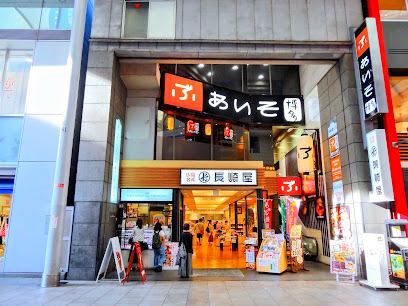
Hondori Shopping Street
Discover the vibrant Hondori Shopping Street in Hiroshima - a delightful blend of shopping, dining, and culture awaits you!

Maison Margiela Hiroshima
Explore unique fashion at Maison Margiela Hiroshima, where contemporary design meets luxury in the heart of Japan's historic city.

Essential bars & hidden hideouts
KeMBY's Brew Pub
Experience the best of Hiroshima's culinary scene at KeMBY's Brew Pub, featuring delicious burgers, craft beers, and a vibrant atmosphere perfect for socializing.

Molly Malone’s
Discover the vibrant atmosphere of Molly Malone’s, a charming Irish pub in Hiroshima offering delicious food, local brews, and live music.

Bar Alegre
Experience Hiroshima's vibrant nightlife at Bar Alegre, where masterful cocktails and an inviting ambiance await every visitor.
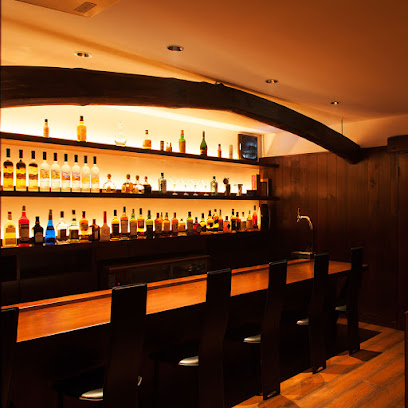
Mac Bar
Discover the vibrant nightlife at Mac Bar, a stylish bar in Hiroshima offering a unique blend of local drinks and a welcoming atmosphere.

段原Little Standard 靴を脱いで寛ぐStyle
Discover the unique blend of traditional Japanese culture and modern dining at Danbara Little Standard in Hiroshima, where comfort meets exquisite flavors.

Hiroshima Hop's
Experience the vibrant flavors of Hiroshima at Hiroshima Hop's, where local beers and traditional izakaya dishes create unforgettable memories.

Tropical Bar Revolución
Discover the vibrant nightlife at Tropical Bar Revolución in Hiroshima, where an array of cocktails and a lively atmosphere await every visitor.

Bar the Lounge Top Note (ザ ラウンジ トップノート 別館)
Discover the elegance and creativity of cocktails at Bar the Lounge Top Note, a premier cocktail bar in Hiroshima offering a vibrant atmosphere and exceptional service.
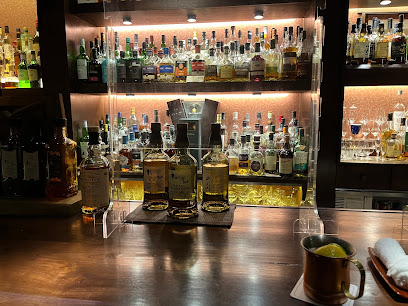
Lemon Stand Hiroshima (Lemon sour, Craft beer, Raw oyster, Curry, Natural wine)
Savor the best of Hiroshima at Lemon Stand, where fresh oysters meet craft beer and natural wines in a cozy, inviting atmosphere.

Bar the Lounge Top Note
Experience the elegance of Bar the Lounge Top Note in Hiroshima, where sophisticated cocktails and a vibrant atmosphere await nightlife enthusiasts.

The Smith Lab
Experience the vibrant nightlife of Hiroshima at The Smith Lab, a premier bar offering unique cocktails and a lively atmosphere.

Uluru
Discover the majestic beauty and cultural significance of Uluru, a UNESCO World Heritage Site in the heart of Australia, perfect for nature lovers and adventurers.
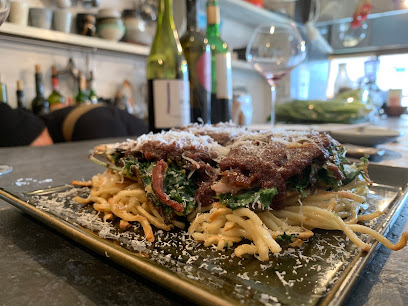
PUB and BAR PIC
Discover the heart of Hiroshima's nightlife at PUB and BAR PIC, where local flavors meet a vibrant atmosphere perfect for any traveler.

Local Phrases
-
- Helloこんにちは
[konnichiwa] - Goodbyeさようなら
[sayonara] - Yesはい
[hai] - Noいいえ
[iie] - Please/You're welcomeどうぞ
[douzo] - Thank youありがとう
[arigatou] - Excuse me/Sorryすみません
[sumimasen] - How are you?お元気ですか?
[ogenki desu ka?] - Fine. And you?元気です。あなたは?
[genki desu. anata wa?] - Do you speak English?英語を話せますか?
[eigo o hanasemasu ka?] - I don't understandわかりません
[wakarimasen]
- Helloこんにちは
-
- I'd like to see the menu, pleaseメニューを見せてください
[menyuu o misete kudasai] - I don't eat meat肉を食べません
[niku o tabemasen] - Cheers!乾杯!
[kanpai!] - I would like to pay, pleaseお会計をお願いします
[okaikei o onegaishimasu]
- I'd like to see the menu, pleaseメニューを見せてください
-
- Help!助けて!
[tasukete!] - Go away!去ってください!
[satte kudasai!] - Call the Police!警察を呼んで!
[keisatsu o yonde!] - Call a doctor!医者を呼んで!
[isha o yonde!] - I'm lost道に迷っています
[michi ni mayotteimasu] - I'm ill具合が悪いです
[guai ga warui desu]
- Help!助けて!
-
- I'd like to buy......を買いたいです
[... o kaitai desu] - I'm just lookingただ見ています
[tada miteimasu] - How much is it?いくらですか?
[ikura desu ka?] - That's too expensiveそれは高すぎます
[sore wa takasugimasu] - Can you lower the price?値段を下げてもらえますか?
[nedan o sagetemoraemasu ka?]
- I'd like to buy......を買いたいです
-
- What time is it?今何時ですか?
[ima nanji desu ka?] - It's one o'clock一時です
[ichiji desu] - Half past (10)10時半
[juuji han] - Morning朝
[asa] - Afternoon昼
[hiru] - Evening夕方
[yuugata] - Yesterday昨日
[kinou] - Today今日
[kyou] - Tomorrow明日
[ashita] - 1一
[ichi] - 2二
[ni] - 3三
[san] - 4四
[shi] - 5五
[go] - 6六
[roku] - 7七
[shichi] - 8八
[hachi] - 9九
[kyuu] - 10十
[juu]
- What time is it?今何時ですか?
-
- Where's a/the...?...はどこですか?
[... wa doko desu ka?] - What's the address?住所は何ですか?
[juusho wa nan desu ka?] - Can you show me (on the map)?地図で見せていただけますか?
[chizu de misete itadakemasu ka?] - When's the next (bus)?次の(バス)はいつですか?
[tsugi no (basu) wa itsu desu ka?] - A ticket (to ....)(...)のチケットをください
[(...) no chiketto o kudasai]
- Where's a/the...?...はどこですか?
History of Hiroshima Peace Memorial Park
-
Hiroshima, originally established as a castle town in the 16th century, became a military city during the Meiji Era. Its strategic location made it a vital military headquarters, which ultimately led to its devastating fate on August 6, 1945. As World War II intensified, Hiroshima's industries and military installations made it a target for the United States, culminating in the dropping of the atomic bomb.
-
On August 6, 1945, at 8:15 AM, an atomic bomb, nicknamed 'Little Boy,' was dropped on Hiroshima, resulting in unprecedented destruction and loss of life. Approximately 140,000 people perished by the end of that year due to the immediate effects and subsequent radiation exposure. The city was left in ruins, with the remnants of buildings and the suffering of survivors marking a tragic chapter in human history.
-
In the years following the bombing, Hiroshima transformed its landscape from one of devastation to a symbol of peace. The Hiroshima Peace Memorial Park was established in 1954 to commemorate the victims and promote a message of peace. The park features several monuments, including the iconic Atomic Bomb Dome, which stands as a UNESCO World Heritage Site and serves as a reminder of the horrors of nuclear warfare.
-
Hiroshima Peace Memorial Park is not only a site of remembrance but also a center for education about the consequences of war and the importance of peace. The Hiroshima Peace Memorial Museum, located within the park, provides extensive exhibits detailing the events surrounding the bombing, survivor stories, and initiatives for nuclear disarmament. The park hosts various events, including peace ceremonies and international conferences, fostering a global dialogue on peace.
-
Every year on August 6, Hiroshima holds a Peace Memorial Ceremony in the park to honor the victims of the atomic bombing. The ceremony features a moment of silence at 8:15 AM, the time the bomb was dropped, followed by speeches from survivors, dignitaries, and peace activists. Lanterns are floated on the Motoyasu River, symbolizing the spirits of those lost and expressing hopes for a world free of nuclear weapons.
Hiroshima Peace Memorial Park Essentials
-
Hiroshima Peace Memorial Park is centrally located in Hiroshima. From Hiroshima Station, you can take the Astram Line to Kencho-mae Station, which is a short walk from the park. Alternatively, you can take a bus from the station; several routes serve the area, including Line 24 and 29. If you're coming from the Hiroshima Airport, a direct bus service connects the airport to Hiroshima Station, and from there, you can easily reach the park.
-
Hiroshima Peace Memorial Park is pedestrian-friendly and best explored on foot. There are also rental bicycles available nearby, providing a convenient way to cover more ground. The park is accessible via local trams; the closest tram stop is Genbaku Dome-mae. Public buses also operate within the vicinity, making it easy to hop between different attractions.
-
Hiroshima is generally safe for tourists, with low crime rates. However, it is advisable to remain vigilant, particularly in crowded areas. While there are no specific high-crime areas targeting tourists, avoid poorly lit streets at night and be cautious of pickpockets in crowded settings. Overall, the Peace Memorial Park area is well-patrolled and considered safe.
-
In case of an emergency, dial 110 for police assistance or 119 for fire and medical emergencies. The Hiroshima Peace Memorial Park has first aid stations available for minor injuries. Additionally, there are several hospitals and clinics within close proximity to the park. It's also advisable to have travel insurance that includes coverage for medical emergencies.
-
Fashion: Do wear comfortable walking shoes and dress modestly, especially when visiting memorial sites. Avoid overly casual attire. Religion: Do show respect in memorial areas; silence is appreciated. Public Transport: Do give up your seat for elderly passengers and avoid speaking loudly. Don't eat or drink on public transport. Greetings: Do bow slightly when greeting someone, as it shows respect. Eating & Drinking: Do try local specialties at nearby eateries, but don't eat in public spaces outside designated areas.
-
To experience Hiroshima Peace Memorial Park like a local, consider joining a guided tour for in-depth historical context. Visit during the early morning or late afternoon to avoid crowds and enjoy a more contemplative atmosphere. Engage with local volunteers who often provide free tours and insights. Don't miss the nearby Hondori Shopping Arcade, where you can sample local street food and shop for souvenirs.
Trending Landmarks in Hiroshima Peace Memorial Park
Nearby Cities to Hiroshima Peace Memorial Park
-
Things To Do in Fukuoka
-
Things To Do in Osaka
-
Things To Do in Nara
-
Things To Do in Kyoto
-
Things To Do in Ulsan
-
Things To Do in Busan
-
Things To Do in Gyeongju
-
Things To Do in Pohang
-
Things To Do in Daegu
-
Things To Do in Andong
-
Things To Do in Nagoya
-
Things To Do in Kanazawa
-
Things To Do in Suncheon
-
Things To Do in Daejeon
-
Things To Do in Jeonju










